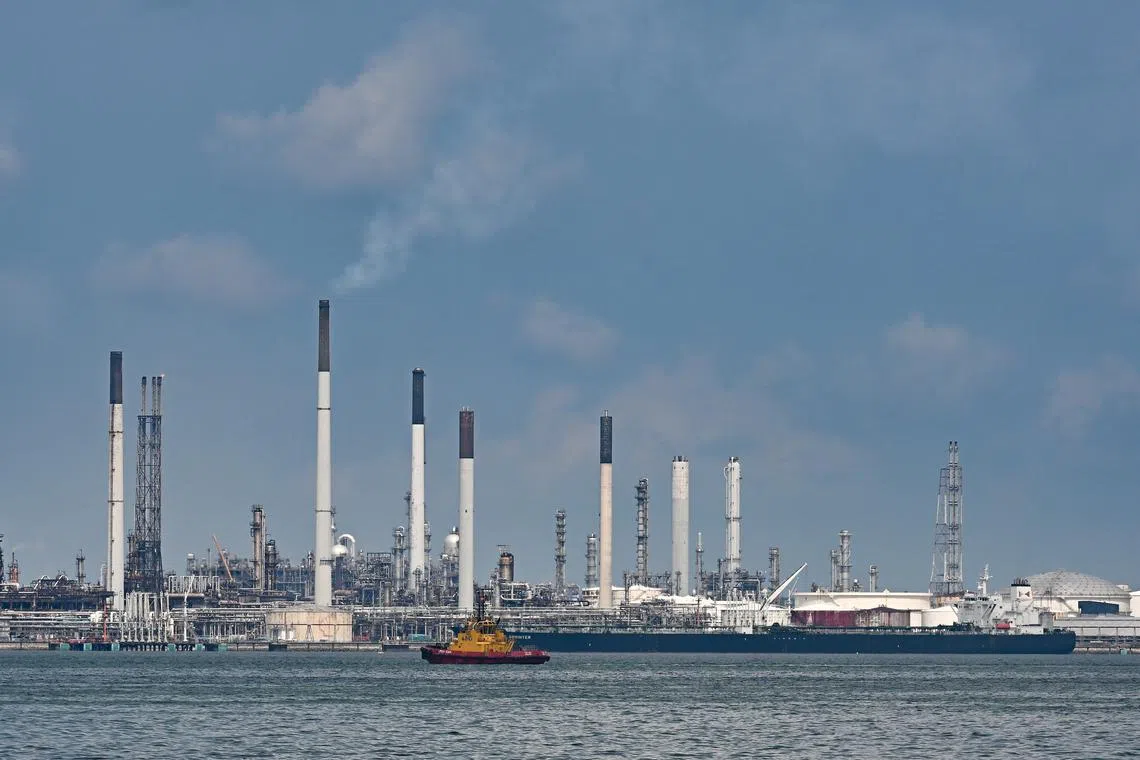Singapore projects its greenhouse gas emissions to peak in 2028: Report
Sign up now: Get ST's newsletters delivered to your inbox

The report estimates that in 2025, Singapore’s emissions will be 62.21Mt CO2 eq.
ST PHOTO: LIM YAOHUI
Follow topic:
SINGAPORE – Singapore expects its planet-warming emissions to reach a peak of 64.43 million tonnes (Mt) in 2028, before coming down after that.
This timeline for when Singapore will reach its peak emissions was revealed for the first time in the Republic’s first biennial transparency report, which it submitted to the United Nations on Nov 11, the day the UN climate conference COP29 kicked off in Baku, Azerbaijan.
Singapore had previously said it plans to have its greenhouse gas emissions reach a peak between 2025 and 2028 at around 65Mt, before dipping to about 60Mt in 2030.
That is the target Singapore has set for itself under the Paris Agreement, the world’s climate pact. The target, announced in October 2022, is based on estimates that the nation’s greenhouse gas emissions would reach about 60Mt in 2030 after peaking earlier.
At that time, no timeline was given on when it would peak.
Subsequently, Minister for Sustainability and the Environment Grace Fu told Parliament in November 2022 that Singapore will aim to have its emissions reach a peak between 2025 and 2028.
In the latest report submitted to the UN, however, Singapore said it has projected that 2028 will be its peak emissions year
For context, Singapore’s total greenhouse gas emissions in 2022 was 58.59Mt of carbon dioxide equivalent (CO2 eq). CO2 eq is a term used as a measurement of total greenhouse gases emitted.
This was up from the 58.29Mt CO2 eq in 2021, and 53.87Mt CO2 eq in 2020.
The report also estimated that in 2025, Singapore’s emissions will be 62.21Mt CO2 eq, although the use of eligible carbon credits can bring this down to 59.7Mt CO2 eq.
Under the Paris Agreement, countries can cooperate with one another to achieve their climate change targets through the international carbon market. These cooperative mechanisms are codified under Article 6 of the agreement.
One carbon credit represents one tonne of greenhouse gas emissions, and emitter countries like Singapore can buy these credits from another country to offset their carbon footprint.
The report said Singapore’s total emissions in 2028 will be 64.43Mt CO2 eq, but will be brought down to 61.92Mt CO2 eq with the use of carbon credits.
By 2030, total emissions will drop to 62.51Mt CO2 eq, and be brought down further to the 60Mt CO2 eq outlined in Singapore’s 2030 climate target.
Ms Melissa Low, a climate policy observer and research fellow at the NUS Centre for Nature-based Climate Solutions, said that the 2028 timeline for peak emissions is significant as it shows that Singapore plans to have its emissions reach a peak closer to 2030.
“This indicates that the emitting sectors here have a longer time to transition,” she added.
Commenting on the figures in the UN report, which shows Singapore’s plans to use carbon credits to meet its climate change targets, Ms Low said that it is not clear yet if the carbon credits will be paid for by companies or by the Government.
Currently, carbon tax-liable companies in Singapore can buy internationally transferrable carbon credits to offset up to 5 per cent of their tax liabilities. However, if companies do not buy these credits, or if there is any shortfall, it is not yet clear who will be responsible for buying them, Ms Low said.
Moreover, there is also some uncertainty about the use of carbon credits on the international front, she added, pointing to ongoing discussions on carbon markets at COP29.
For example, there is no outcome yet on whether or when host countries will be allowed to revoke internationally transferable carbon credits after they are authorised.
“This can be a source of concern for buying countries like Singapore,” said Ms Low.
“There will need to be safeguards and Singapore may wish to buy more (credits) than necessary in case some deals fall through if projects are unable to deliver on carbon reductions or removals, or if countries don’t apply corresponding adjustments.”
Corresponding adjustments help to ensure that the host country adds back the emissions reductions sold to another country, so that the same credit is not claimed twice.


